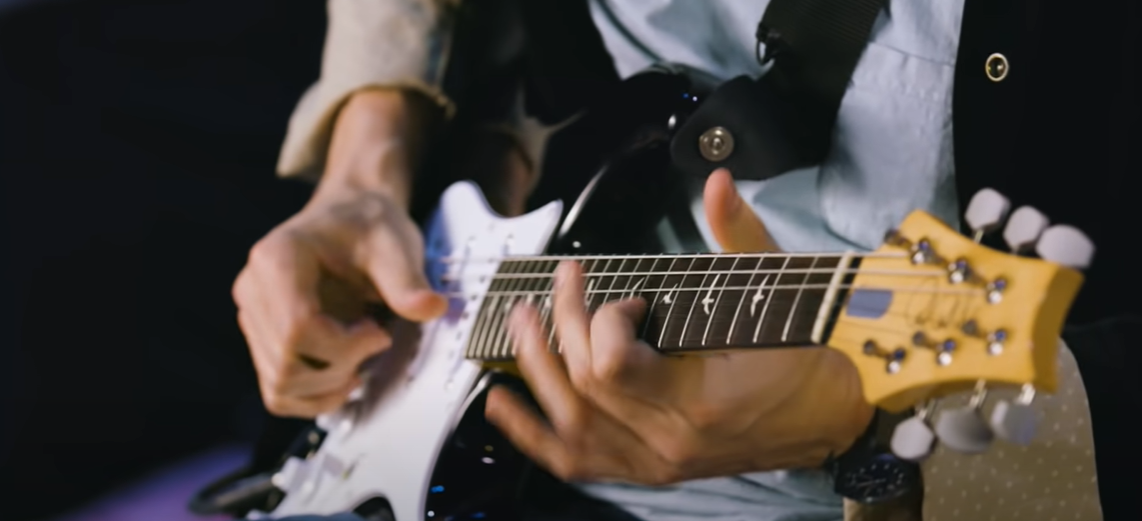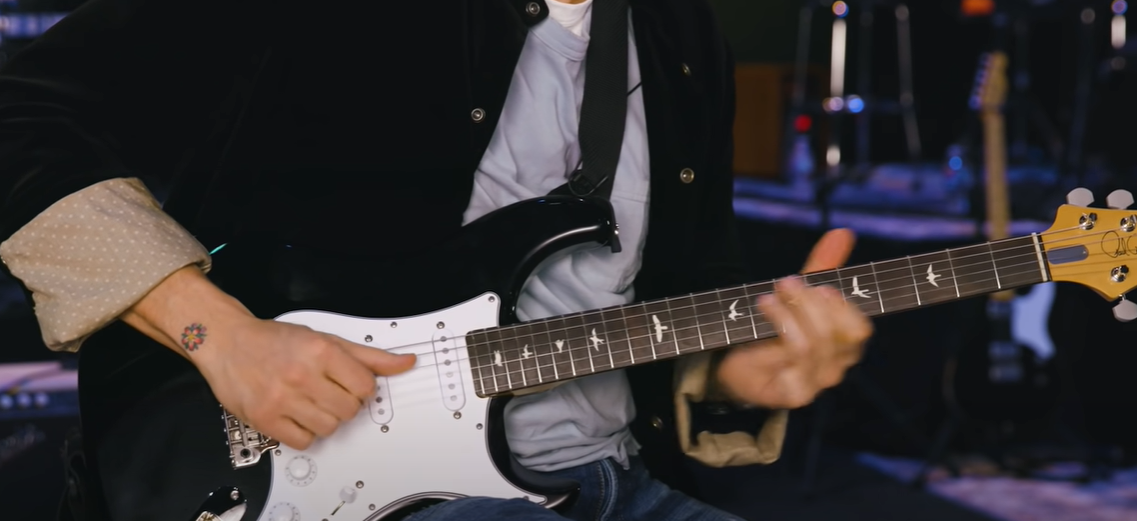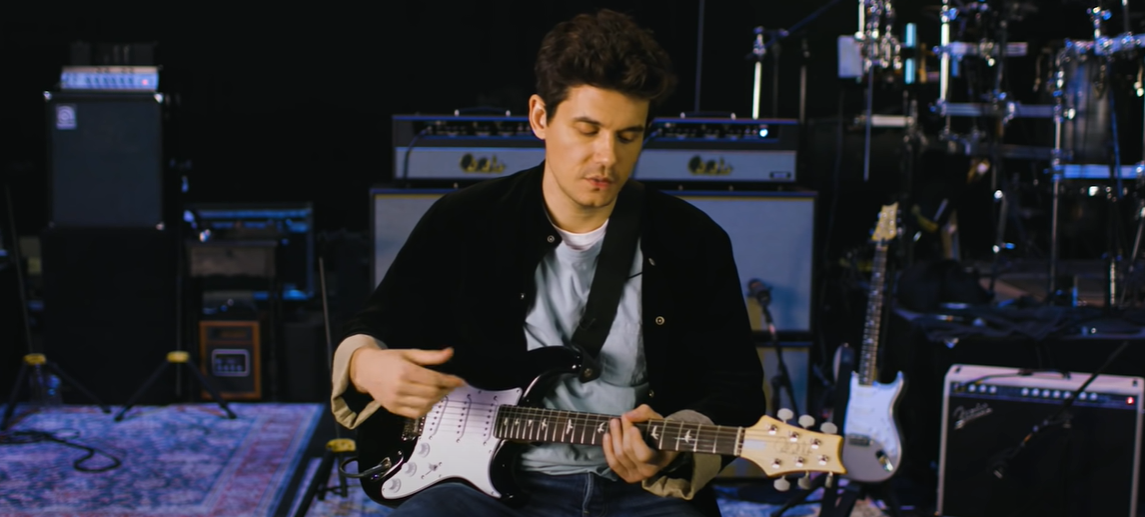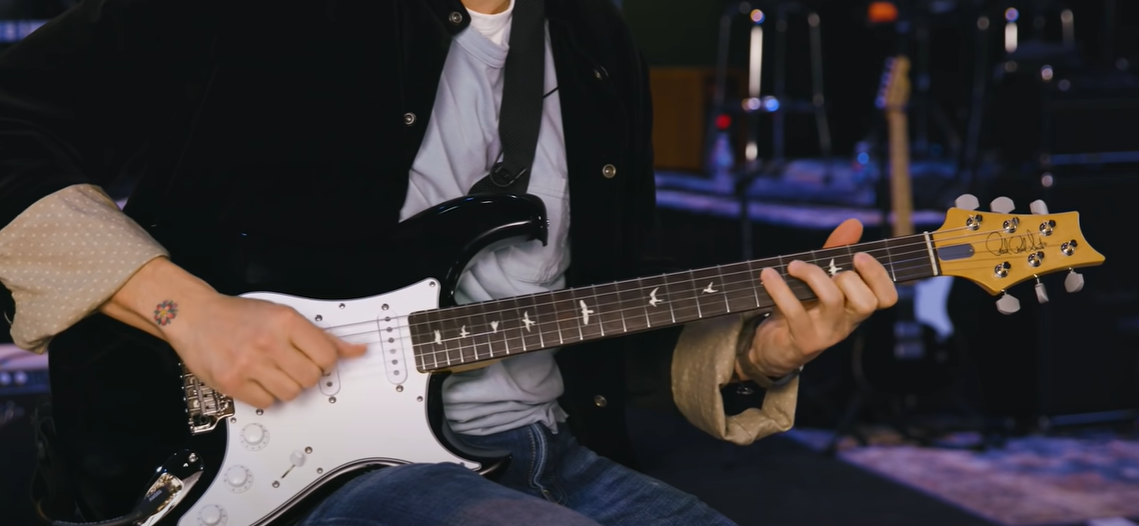Step into the world of rock and blues virtuoso, John Mayer, as this article will delve deep into the enchanting realm of his guitar collection and gear. Prepare to be transported on a musical journey like no other, as it will explore the heart and soul of this legendary musician’s arsenal. From the silky smooth tones of his signature Fender Stratocasters to the tantalizingly rare vintage treasures adorning his collection, this is a tantalizing glimpse behind the curtain of one of music’s most revered artists. So, fellow guitar enthusiasts, sit back, relax and uncover the secret sauce that makes John Mayer’s sound so irresistibly unforgettable.
What music does John Mayer play?
John Mayer is an American singer-songwriter and musician. He is known for his unique blend of pop, rock, blues, and soul music. His musical style has been compared to artists such as Eric Clapton, Stevie Ray Vaughan, and Jimi Hendrix.
Mayer’s primary instrument is the guitar. He is a skilled guitarist with a versatile playing style that incorporates elements of blues, rock, and jazz. He is also known for his smooth vocals and heartfelt lyrics.
In addition to playing the guitar, Mayer is also proficient in other instruments such as the piano and harmonica. He has also collaborated with other musicians in a variety of genres, showcasing his versatility as an artist.

Mayer’s music has evolved over the years, from his early acoustic singer-songwriter style to incorporating more electric and blues influences in his later albums. Regardless of the genre, his music continues to capture audiences with its heartfelt lyrics and soulful melodies.
Overall, John Mayer’s musical style is a unique blend of various genres, showcasing his talent as a musician and songwriter. His versatility in playing multiple instruments and collaborating with different artists makes him one of the most respected musicians in the industry. Whether it’s acoustic ballads or electrifying solos, Mayer’s music continues to captivate listeners and solidify his place as one of the most talented musicians of his generation [1].
Summary of John Mayer’s gear
John Mayer’s Electric Guitars
John Mayer, widely recognized as an accomplished guitarist, has not only developed his own unique style of playing but has also left an indelible mark in the music industry. Renowned for his smooth bluesy sound and awe-inspiring technical skills on the guitar, Mayer’s artistry goes beyond mere virtuosity.
At the heart of his musical journey lies the legendary Fender Stratocaster, serving as Mayer’s primary electric guitar of choice. Yet, within this realm, he has explored various models of this iconic instrument, including the revered Stevie Ray Vaughan signature model, as well as his own self-designed “Black1” and “Sunburst” Strats, each holding a profound significance in his musical expression.
Moreover, in moments of artistic exploration, Mayer also indulges in the melodic embrace of a Fender Telecaster or a Gibson Les Paul, revealing the depth and versatility of his musical prowess. As we unravel the intricate tapestry of John Mayer’s musical journey, we discover the symbiotic relationship between the artist and his chosen instruments, resulting in exquisite melodies that resonate with audiences around the world.

John Mayer’s Acoustic Guitars
In addition to his exceptional talent on electric guitars, John Mayer has gained recognition for his remarkable skill on acoustic guitars. Renowned for his soulful performances, Mayer frequently captivates audiences with mesmerizing solo acoustic sets during his live shows. Notably, he has released multiple albums that showcase predominantly acoustic arrangements, highlighting his versatility as a musician.
When it comes to his choice of acoustic guitars, Mayer’s primary instrument is a cherished vintage Martin 00-45SC. This iconic guitar has been an integral part of his recorded works and live performances, resonating with its rich and distinctive sound. Furthermore, Mayer’s collection boasts other esteemed high-end acoustics, including a timeless 1958 Gibson J-45 and an exquisite 1934 National Duolian.
The depth and breadth of Mayer’s acoustic prowess is truly awe-inspiring, as he continues to push boundaries and captivate audiences with his mastery of both electric and acoustic guitar styles.
John Mayer’s Amplifiers
Along with his guitars, John Mayer’s choice of amplifiers plays an important role in creating his signature sound. He has been seen using various Fender amps, such as the Vintage Reissue ’65 Deluxe Reverb and the Vibro-King Custom, which provide him with a unique and dynamic tone. Mayer has also experimented with other brands, including Dumble and Two-Rock amps, to achieve specific sounds for his recordings and live performances.
In addition to amplifiers, Mayer is known for his extensive use of pedals in crafting his diverse range of tones. He has an impressive collection of effects pedals from different manufacturers, ranging from the classic Ibanez Tube Screamer to boutique pedals like the Klon Centaur and the JHS Bonsai Overdrive. Each pedal brings a distinct flavor to his sound, allowing Mayer to create intricate layers of tones that elevate his music.
From electric guitars and amplifiers to acoustic instruments and effects pedals, John Mayer’s gear collection is an embodiment of his passion for music and relentless pursuit of sonic perfection. As he continues to evolve as an artist, it will be exciting to see what new additions and innovations Mayer brings to his ever-growing collection in the future. So, his fans can only anticipate more amazing performances and musical delights from this guitar virtuoso.

John Mayer’s Effects Pedals
Apart from amplifiers, John Mayer’s extensive use of pedals is also a major contributor to his iconic sound. From the classic Ibanez Tube Screamer to boutique pedals like the Klon Centaur and the JHS Bonsai Overdrive, Mayer’s collection boasts an impressive variety of effects pedals from different manufacturers.
Mayer has often stated that he sees pedals as tools for creative expression, rather than just a means to achieve different tones. He has also been known to modify and experiment with his pedals, leading to unique and personalized sounds that only add to the depth of his music.
Some notable pedals in Mayer’s collection include the Boss DD-2 Digital Delay, which he uses extensively in his live performances, as well as the Fulltone Fulldrive 2, which provides a warm and rich overdrive sound. Additionally, Mayer has also incorporated loopers like the TC Electronic Ditto X4 into his live shows, allowing for greater sonic exploration and improvisation.
In conclusion, John Mayer’s gear collection is a testament to his dedication and passion for creating music that moves and inspires people. With his ever-evolving sound and constant experimentation, we can only anticipate more groundbreaking music from this talented artist in the years to come. So, let’s sit back, plug in our guitars, and continue to be mesmerized by John Mayer’s musical journey. From his electric guitars to his amplifiers and effects pedals, each element plays a crucial role in shaping Mayer’s unique sound and artistic expression. As he continues to push boundaries and explore new musical frontiers, we can only imagine what captivating melodies and soulful performances await us from this guitar virtuoso.
John Mayer’s Strings
Aside from his guitars and amplifiers, the type of strings Mayer uses is also an essential component in achieving his signature sound. Known for experimenting with different string gauges and materials, Mayer has a unique approach to selecting strings that complement his playing style.
Mayer’s attention to detail in choosing his strings further highlights his dedication and commitment to creating music that resonates with his audience on a deeper level. It is this level of passion and precision that sets him apart as a musician, making his performances truly unforgettable experiences for his fans.
In conclusion, John Mayer’s gear collection is a reflection of his musical journey and growth as an artist. From humble beginnings to international success, Mayer’s dedication to honing his craft and pushing boundaries has made him one of the most influential guitarists of our time. As he continues to evolve and inspire, we can only imagine what exciting new elements he will bring to his ever-evolving collection in the future.

John Mayer’s Accessories
While Mayer’s guitars, amplifiers, and pedals steal the spotlight, his collection of accessories also plays a crucial role in creating his unique sound. From picks to straps to cables, each accessory is carefully selected to enhance and complement Mayer’s playing style.
Mayer is known for using Gravity Picks, which are made from acrylic material and provide a bright and crisp tone. He also prefers using high-quality Mogami cables, which are known for their durability and low noise interference. Additionally, Mayer has been seen using Levy’s leather guitar straps, which are known for their comfort and stylish designs.
Beyond just functionality, Mayer’s choice of accessories also reflects his style and attention to detail in every aspect of his music. It is this level of thoughtfulness and consideration that makes his performances truly exceptional and unforgettable for his fans.
In conclusion, John Mayer’s gear collection is a testament to his dedication and passion for creating music that moves and inspires people. From guitars to amplifiers to pedals to accessories, each element plays a crucial role in shaping Mayer’s unique sound and artistic expression [2].
How to maintain electric guitars?
Electric guitars are a popular choice for musicians due to their versatility and ease of use. However, like any instrument, they require proper maintenance to perform at their best. In this guide, we will discuss the steps you can take to keep your electric guitar in top condition.
Cleaning and Polishing
One of the most important aspects of maintaining an electric guitar is keeping it clean and polished. This not only helps to keep the instrument looking good but also prevents any build-up of dirt or grime that could affect its sound.
To clean your guitar, you will need a soft cloth, specialized guitar polish, and some elbow grease. Gently wipe down the body of the guitar with the cloth to remove any dust or fingerprints. Then, apply a small amount of polish to the cloth and use it to buff out any smudges or scratches on the surface. It is important to note that you should never use household cleaners or abrasive materials on your guitar as they can cause damage to the finish.

Changing Strings
Regularly changing your strings is another key aspect of guitar maintenance. Over time, strings can become worn and lose their clarity, affecting the sound of your instrument. To change your strings, start by detuning them and then removing them from the bridge and tuning pegs. Take this opportunity to also clean any dirt or residue that may have built up on these parts. Next, take your new set of strings and thread them through the appropriate holes on the bridge and tuning pegs. Once they are secured, use a tuner to tune them to the correct pitch.
Adjusting the Action
The action of a guitar refers to how high the strings sit above the fretboard. Too high of an action can make playing difficult and uncomfortable, while too low of an action can cause buzzing or other issues with sound quality. If you find that your guitar’s action needs adjusting, you can do so by tightening or loosening the truss rod located in the neck of the guitar. First, loosen the strings to relieve tension on the neck. Then, use an appropriate tool to turn the truss rod clockwise or counterclockwise until you achieve your desired action.
Protecting from Environmental Factors
Lastly, it is important to protect your electric guitar from environmental factors that can damage it. Extreme temperatures, humidity, and exposure to sunlight can all cause harm to your instrument. To prevent this, store your guitar in a cool, dry place and avoid leaving it near windows or doors where it may be exposed to direct sunlight or drastic temperature changes. You may also want to invest in a guitar case or gig bag to provide additional protection when transporting your instrument.
By following these steps and regularly maintaining your electric guitar, you can ensure that it will continue to perform at its best for years to come. Remember, taking care of your guitar is a key part of being a musician, so make sure to prioritize maintenance as part of your musical routine. So go ahead and pick up your trusty electric guitar and start practicing, knowing that it is in great condition! Keep on rockin’ [3]!
How to take care of acoustic guitars?
Taking care of acoustic guitars is essential to maintain the quality and longevity of your instrument. Whether you are a beginner or an experienced player, following these simple steps will ensure that your guitar sounds and looks its best for years to come.
Cleaning
Regularly cleaning your acoustic guitar is crucial in maintaining its pristine condition and prolonging its lifespan. By preventing the buildup of dirt, dust, and oils from your hands, you ensure that your guitar’s sound quality and performance remain top-notch.
To effectively clean your guitar, start by using a soft, dry cloth to gently wipe down the body, neck, and strings after each use. This helps remove any surface dust or debris that may have accumulated during your playing sessions.
For tougher grime or stains, you can take the cleaning process a step further. Dampen a cloth slightly with mild soap and water, ensuring it is not too wet. Gently wipe the affected areas, being cautious not to saturate the wood or expose it to excessive moisture. Remember to dry off your guitar thoroughly afterward using a clean, dry cloth to prevent any potential damage from moisture.
By following these cleaning practices, you not only keep your guitar looking and sounding its best, but you also contribute to its long-term durability and overall performance. So, make cleaning your acoustic guitar a regular part of your routine to enjoy its beautiful melodies for years to come.

Humidification
Acoustic guitars are made of wood, which is susceptible to changes in humidity. To prevent your guitar from warping, cracking, or losing its tone due to humidity changes, it is essential to keep it in a stable and humidified environment.
It is crucial to note that excessively high humidity levels can also be detrimental to your guitar’s health as they promote mold growth and potentially damage the wood. Therefore, it is essential to find a balance and ensure that your guitar remains within the recommended humidity range.
Storage
Proper storage of your acoustic guitar is not only important for its longevity but also for maintaining its optimal condition. When your guitar is not in use, it is highly recommended to store it in its case. This will provide protection against dust, moisture, and potential accidents that could potentially damage your instrument.
To ensure the best storage conditions, it is crucial to keep the case clean and dry before storing your guitar. Cleaning the case regularly will help prevent the buildup of dirt and dust, which can affect the overall cleanliness of your guitar. Additionally, keeping the case dry will prevent any moisture from seeping in and causing damage to the wood or other components of the instrument.
Moreover, it is important to be mindful of the environment in which you store your guitar. Extreme temperatures and conditions, such as direct sunlight or excessive heat or cold, can have detrimental effects on the wood and overall sound quality of your instrument. Exposing your guitar to these conditions for prolonged periods can lead to warping, cracking, or other irreversible damage.
By taking these precautions and paying attention to the storage of your acoustic guitar, you can ensure its longevity and preserve its sound quality for years to come. Remember, a well-maintained guitar will bring you joy and beautiful music for many years.
Maintenance
Regular maintenance of your acoustic guitar is essential to keep it in top playing condition. This includes changing strings every few months, checking for any loose hardware or parts, and getting adjustments done by a professional if needed. It is also recommended to get your guitar professionally set up every year or so to ensure that it plays and sounds its best.
By incorporating these simple maintenance practices into your routine, you can extend the life of your acoustic guitar and enjoy playing it for many years to come. Remember, a little bit of care goes a long way in keeping your instrument performing at its finest. So, take some time to care for your acoustic guitar, and it will reward you with beautiful music every time you play.

FAQ
What kind of acoustic guitars does John Mayer play?
John Mayer is known for playing a variety of acoustic guitars in his performances. Some of the most common ones include:
- Martin OMJM John Mayer Signature Acoustic Guitar: This is a signature model designed by Martin specifically for John Mayer. It features an Engelmann spruce top and East Indian rosewood back and sides, giving it a warm and balanced tone.
- Martin 000-28EC Eric Clapton Signature Acoustic Guitar: John Mayer has been known to use this model on some of his songs. It has a smaller body size compared to the OMJM but still delivers a rich and full sound.
- Gibson J-45: This is another popular choice for John Mayer, particularly for his bluesier performances. It has a mahogany body and a Sitka spruce top, producing a warm and mellow tone.
- Fender Custom Shop John Mayer Monterey Pop Festival Stratocaster: Although not an acoustic guitar, this iconic electric guitar has been used by John Mayer in some of his live performances. It is known for its psychedelic artwork and vintage sound.
What kind of electric guitars does John Mayer play?
John Mayer is primarily known for playing Fender Stratocasters, but he has also been seen using other electric guitars in his performances. Some of the most notable ones include:
- Fender Custom Shop John Mayer Black1 Stratocaster: This is a replica of John’s main stage guitar, featuring a black nitrocellulose finish and custom pickups.
- Fender Custom Shop John Mayer SRV Signature Stratocaster: This model was designed to replicate Stevie Ray Vaughan’s famous “Number One” Stratocaster, which has been a major influence on John’s playing style.
- PRS Silver Sky: This is a signature model designed by PRS in collaboration with John Mayer. It features a classic double-cutaway design and vintage-inspired tones.
- Gibson ES-335: Although not as commonly used, John has been seen playing this semi-hollow body guitar in some of his performances. It offers a warm and versatile sound that is well-suited for blues and rock music.
What type of guitar does John Mayer play for Dead and Company?
For his performances with Dead and Company, John Mayer primarily plays two types of guitars:
- PRS Super Eagle: This is a custom-made guitar designed by PRS for John Mayer’s performances with the band. It features a semi-hollow body and a highly versatile sound that is suitable for a wide range of genres.
- Fender Custom Shop Stratocaster: Similar to his other Fender Stratocasters, this guitar has been heavily modified and customized for John’s specific needs in a live setting. It offers the familiar Strat sound with added versatility.
Both of these guitars are equipped with special electronics that allow John Mayer to effortlessly switch between different pickup configurations and achieve a wide range of tones during his performances with Dead and Company. So, even though John Mayer is primarily known for playing Fender Stratocasters, he has a diverse collection of guitars that he uses in various settings and performances. His versatile playing style and unique sound can be attributed to his love for experimenting with different instruments and gear.
What guitar does John Mayer play in Where the Light Is?
In the iconic live concert film “Where The Light Is,” John Mayer can be seen playing a variety of guitars, including both acoustic and electric. Some of the most notable ones include:
- Martin OMJM John Mayer Signature Acoustic Guitar: This is the same model mentioned earlier that John uses for his signature sound in many of his performances.
- Fender Custom Shop John Mayer Black1 Stratocaster: This is also the same guitar mentioned earlier, which is John’s main stage guitar and a staple in his live shows.
- Fender Custom Shop 1960 Relic Telecaster: This vintage-inspired electric guitar appears in the film during John’s performance of “In Your Atmosphere.” It has a classic twangy sound that complements the song perfectly.
- Fender Custom Shop Sonic Blue Stratocaster: This guitar makes an appearance during John’s performance of “Come When I Call.” Its unique color and sound add to the visual and auditory experience of the concert.
Overall, “Where The Light Is” showcases John Mayer’s versatility as a musician and his ability to adapt to different styles and genres seamlessly. It also highlights his love for collecting and playing a wide range of guitars, both acoustic and electric. So, if you’re a fan of John Mayer’s music, it’s worth watching the film to see him in action with some of his most beloved instruments. Keep an eye out for any new additions or changes he may make to his collection in future performances!
Useful Video: John Mayer | Guitar Musings with the PRS Silver Sky
Conclusion
So, John Mayer is a legendary musician who has left an indelible mark on the music industry. With his unique blend of blues, rock, and pop, he has won over millions of fans around the world. Through his soulful lyrics and exceptional guitar skills, Mayer has created a timeless sound that continues to resonate with listeners of all ages. Mayer’s most used guitars are the Fender Stratocaster and Gibson ES-335. He has also been known to play a variety of other instruments including the piano, mandolin, and lap steel guitar.
References:
- https://www.radioswissjazz.ch/en/music-database/musician/152813537cd76e8ade6860f706c5556464098b/biography
- https://www.groundguitar.com/john-mayer-guitars-and-gear/
- https://www.guitarworld.com/lessons/guitar-maintenance-10-ways-to-keep-your-electric-guitar-in-top-condition










Leave a Reply